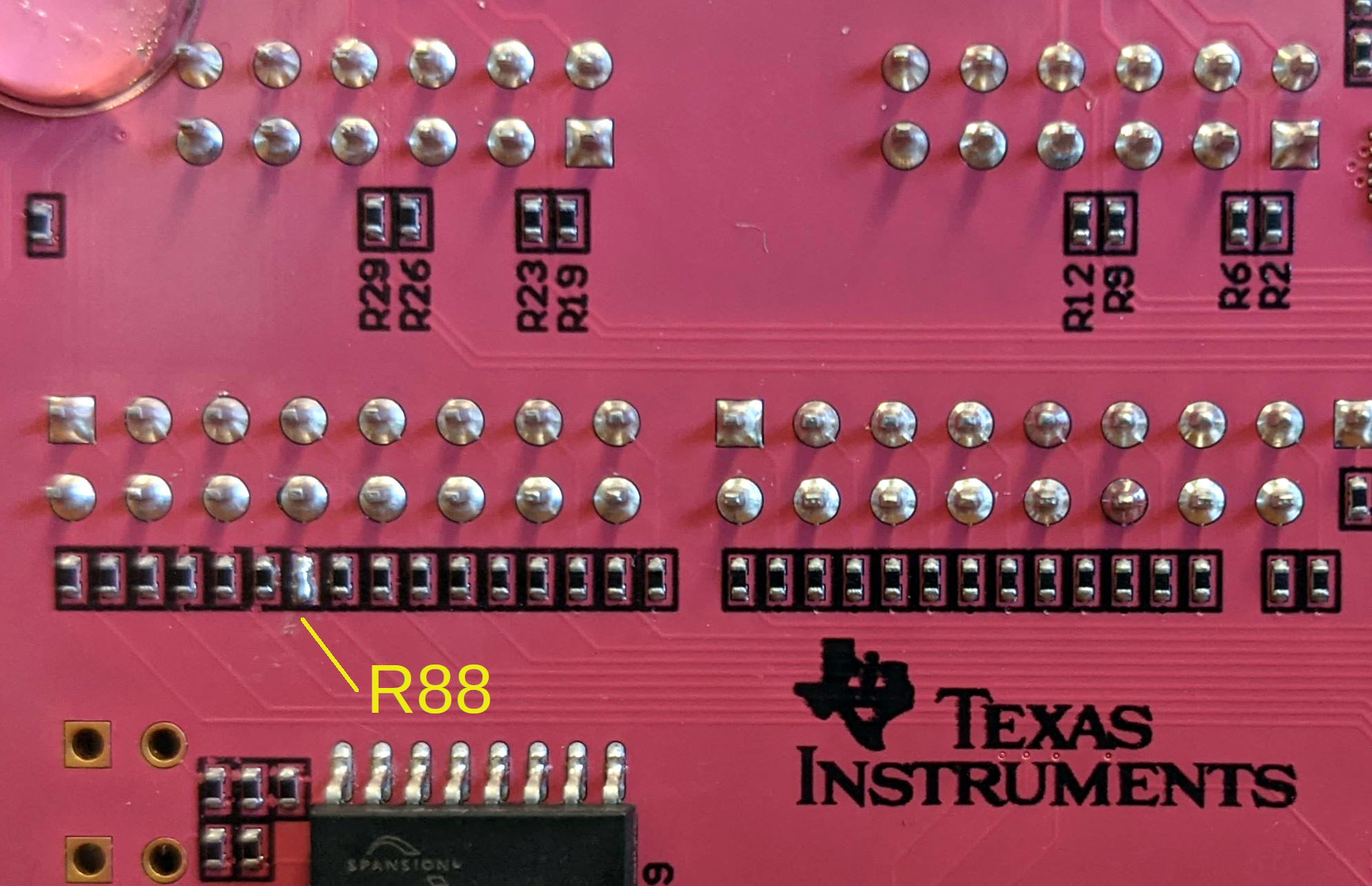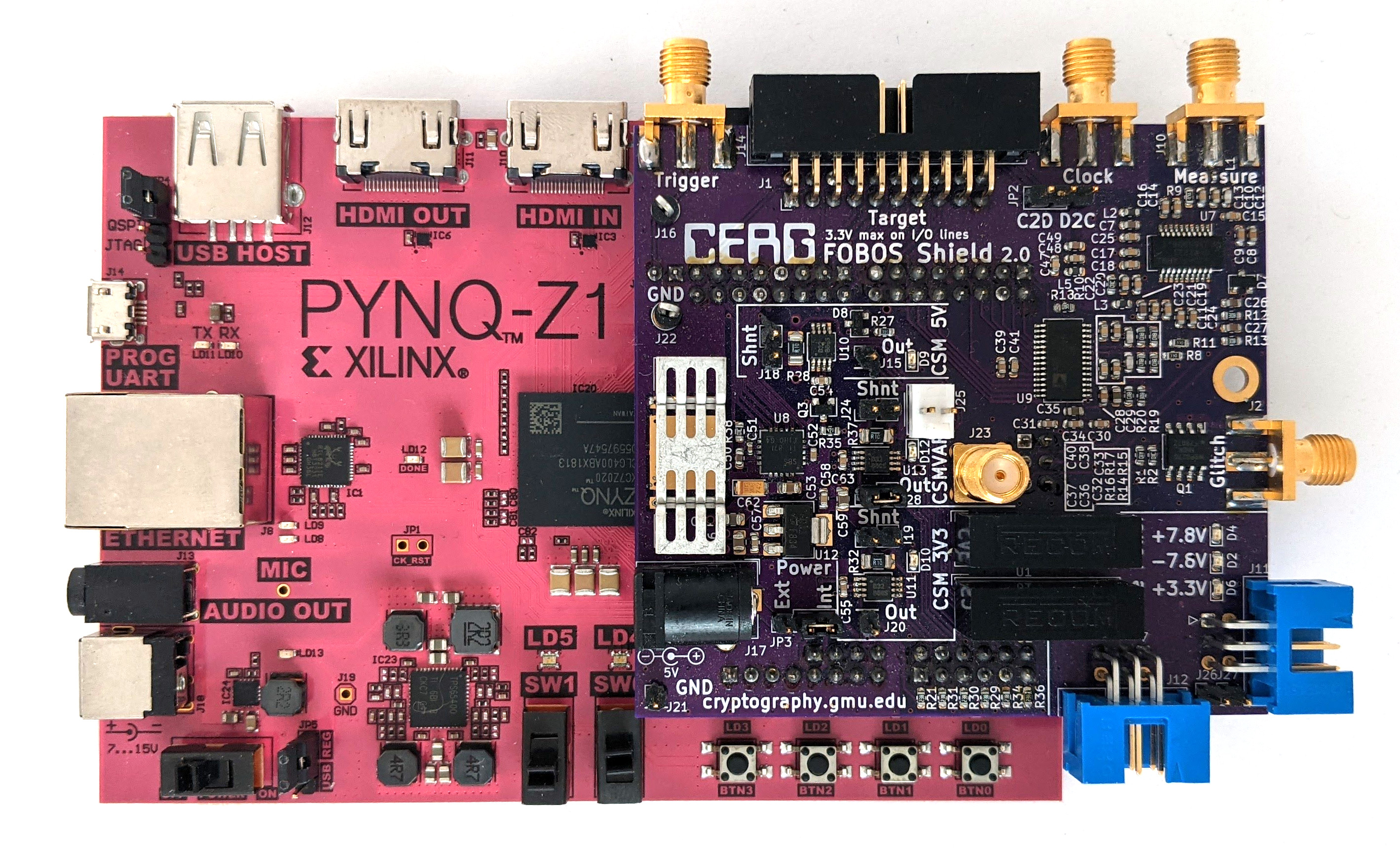3.2. Pynq-Z1 Setup with FOBOS Shield
Below, we describe how to setup the FOBOS Shield with the Pynq-Z1 board.
3.2.1. Modifying the Pynq-Z1 Board
In order to use the FOBOS Shield, a small modification has to be made to the Pynq-Z1 board. On the Pynq board, the 200 Ohm resistor R88 in the line IO29 of the ADC clock has to be removed and replaced with a blob of solder or 0 Ohm resistor. The resistor attenuates the ADC clock signal too much. The board with the removed resistor is shown in (Fig. 3.2).

Fig. 3.2 Modifications to Pynq-Z1 for FOBOS Shield
3.2.2. Attach the FOBOS Shield
Carefully align the connectors of the FOBOS Shield with the Pynq-Z1 Arduino/Chipkit headers and firmly press down to securely connect the boards.

Fig. 3.3 Pynq-Z1 with FOBOS Shield
3.2.3. Connecting the Control Board
You have two options to power the Pynq-Z1 board, either through USB or through an external 7V-15V DC power supply connected to the barrel connector J18.
If you choose the power the Pynq-Z1 board from USB, you have to set the jumper JP5 on the Pynq-Z1 board to
USB. The FOBOS shield requires more power than USB can supply, so you have to connect an external well regulated 5V DC power supply to the FOBOS Shield J17 barrel connector and selectEXTon jumper JP3 on the shield. USB has only sufficient power for the Pynq board.If you choose to power the Pynq-Z1 board with an external power supply then the FOBOS Shield can be powered from the Pynz-Z1 board. Set the jumper JP5 on the Pynq-Z1 board to
REG. SelectINTon jumper JP3 on the FOBOS Shield.Connect the Pynq-Z1 board to your network with an Ethernet cable (CAT-5 or better for optimal performance).
Only during installation, or if you choose to power the Pynq-Z1 board through USB, is the connection from the SCA workstation to the Pynq-Z1 board via USB requiered.
Power-up the boards using the power switch SW4 on the Pynq-Z1 board.